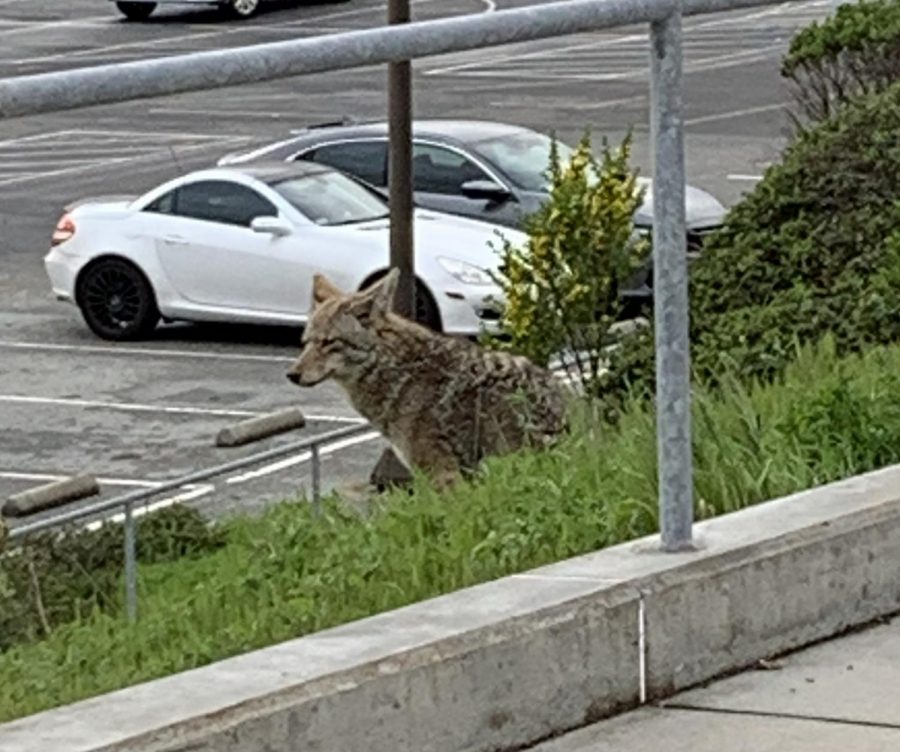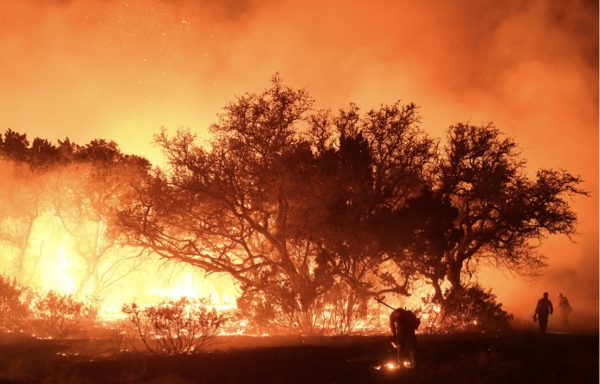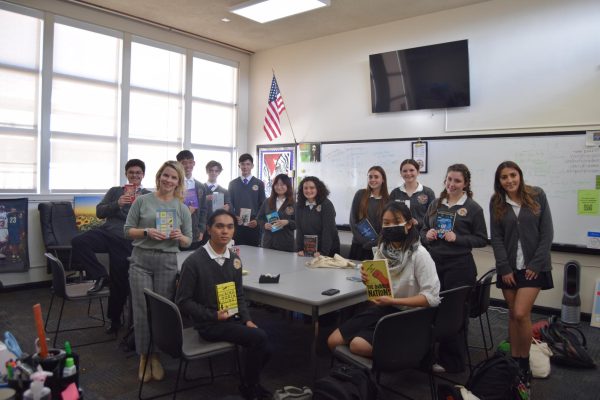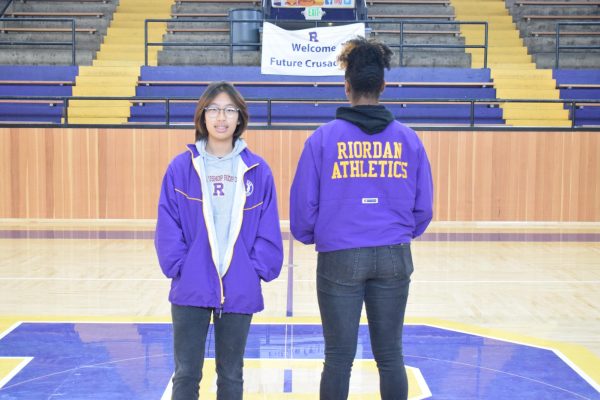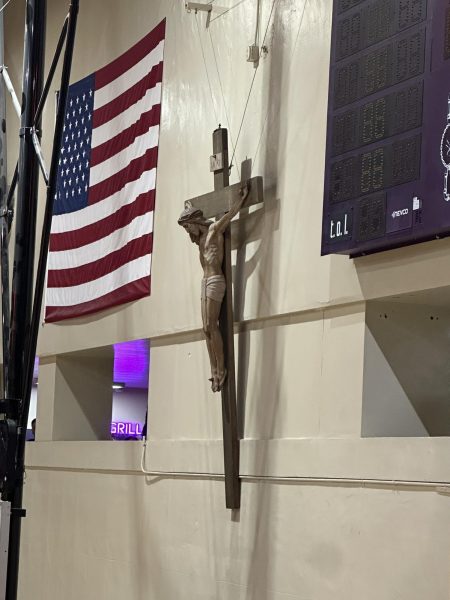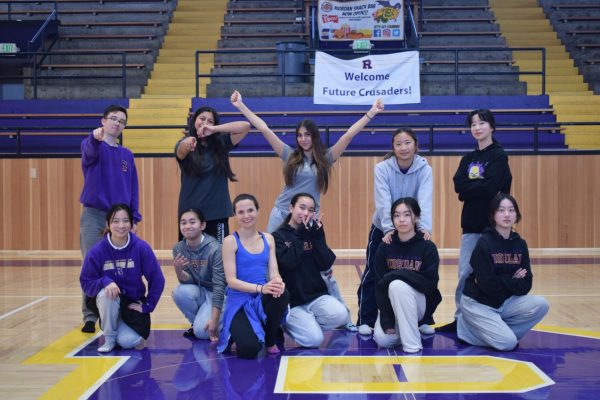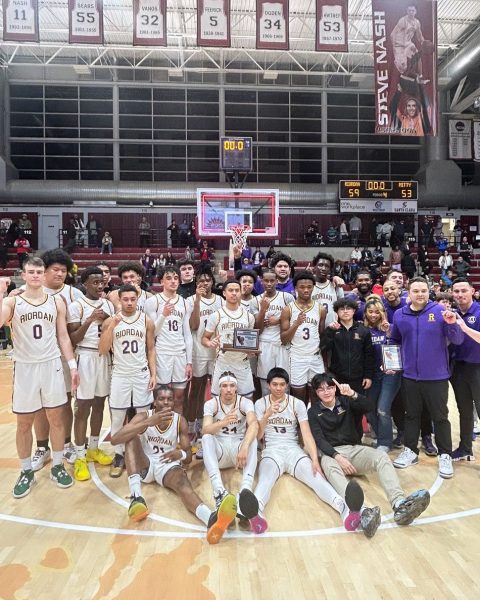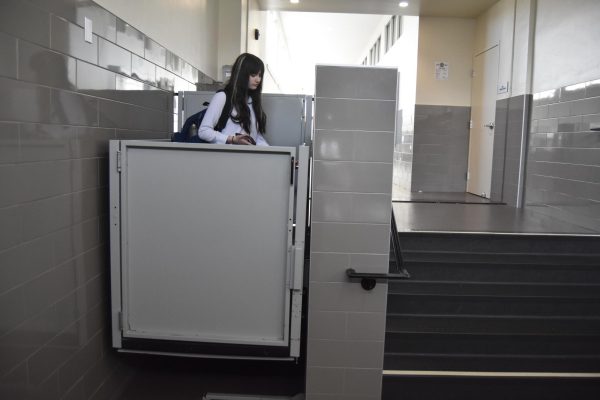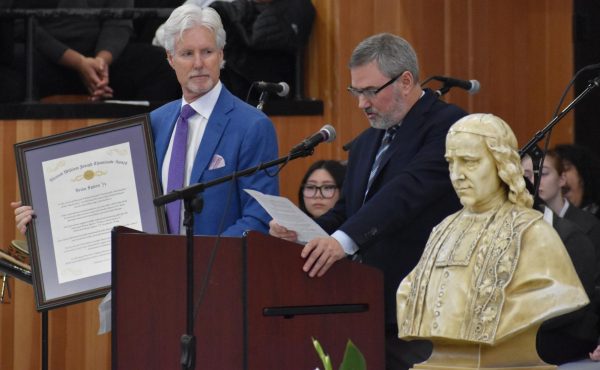Coyotes creep into Crusader Country
Coyotes are more visible in urban areas lately, like this one spotted near the Balboa Reservoir next to school this month.
March 22, 2019
As of late, coyotes have been appearing much more frequently, especially around the Bay Area. Here at Riordan there has been at least one coyote sighting in the Reservoir. Members of the newspaper, as well as many students, who live in South City,Pacifica, and San Francisco have all reported seeing them by their houses. They are even being reported as far away as Silicon Valley.
Jalen Viray ’19, upon seeing one, said, “Wow that’s a really weird looking dog. Wait, is that a coyote?”
These coyotes have been seen attacking animals, and thus many pet owners are keeping their dogs and cats inside. However, there have not been any reports of the coyotes attacking humans.
They have been seen walking around neighborhoods, shopping centers, and parking lots,
seemingly unaffected by seeing cars coming at them.
According to Biology teacher Colleen O’Rourke, “Coyotes are not inherently dangerous to humans, but there are still a few things we need to be respectful of.
For starters, coyotes can be very dangerous to pets—even during the day—so it’s important to keep cats inside and small dogs on a short leash at all times when walking in areas where there are known coyotes.”
Coyotes have been coming closer primarily due to habitat loss. However, coyotes are very good at adapting to different environments.
According to O’Rourke, “Urban environments are a difficult and dangerous landscape for many native predators, so coyotes’ intelligence allows them to exploit an ecological niche that has been largely empty until now.”
She added, “We still don’t fully understand what their lives are like in the San Franciscan landscape, but most researchers think they’re primarily feeding on rats and other rodent pests.
Thus, having city coyotes around is unusual, but actually a sign of a healthy urban ecology coexisting alongside human systems.”
Neighbors who have lost pets to coyotes have a different perspective. Gail Marchi, who lives a few neighborhoods away from Riordan, lost her dog Didi, an 11 year old, 12 pound rat terrier/Italian greyhound, to a coyote three years ago.
Marchi said, “I let her out for her nightly potty break at 11 p.m. While I usually walk down our 10 steps to watch her prance around and finally do her business, I stayed upstairs in our doorway.
I then heard the most horrifying screeching and quickly realized that it was Didi, not with a cat, but knew it had to be a coyote.”
She continued, “I ran down the steps and saw the coyote walking away while Didi escaped and ran into the house, bleeding. She laid down on our dining room floor bleeding and panting. I saw a puncture wound.”
Marchi and her husband rushed Didi to the pet emergency hospital, but she died on the way there.
The Marchis attended a City Hall meeting about coyotes, but did not feel that their concerns were taken seriously. “We left the meeting, with many ‘sorry for your loss’ comments, and felt that nothing would happen.”
About six months later, a neighbor lost their shih tzu Bella to a coyote attack while her owner was unlocking the door to their porch.
Gail Marchi said, “I would hope that cat owners could try and work on making their feral cats indoor cats – if only, for their protection.
I suggest that all dogs be kept on leash at all times and in sight of their owner when walking in the neighborhood.”
She added, “We haven’t gotten another dog and don’t think we will.”
Brendan Passanisi-Boullet ’22 saw a coyote on the Balboa Reservoir earlier this month.
Passanisi-Boullet said, “We were walking on the trail next to the lower parking lot and two upperclassmen said they saw a coyote.
We thought they were just messing with the freshmen, but then we turned, and about 15 feet away, sitting in the grass, was a coyote!”
Mark Barer ’22, who took the photo on the front page said, “I’ve never been nervous about taking a photo before.”
He added, “We made a sound, and it turned and looked at us, and we slowly backed away.”



